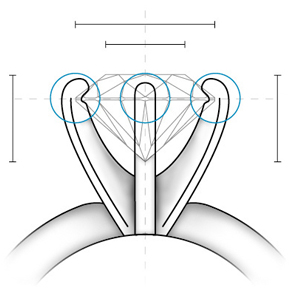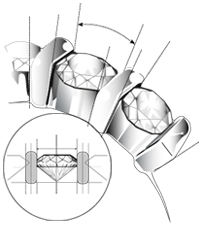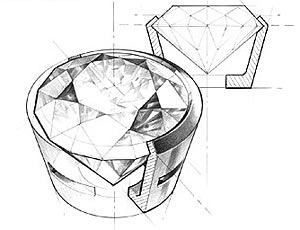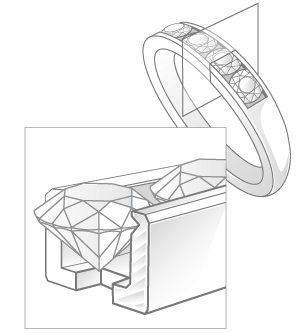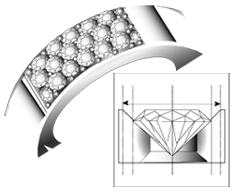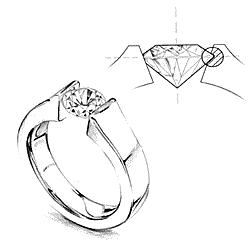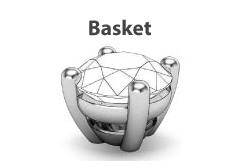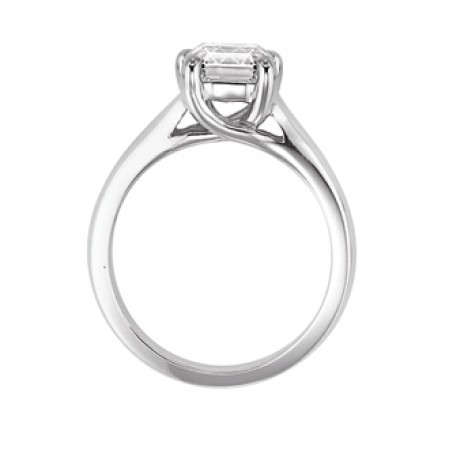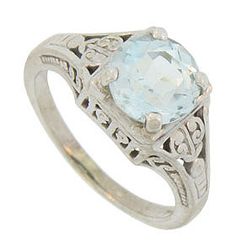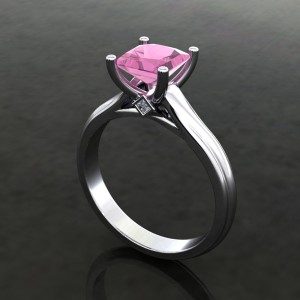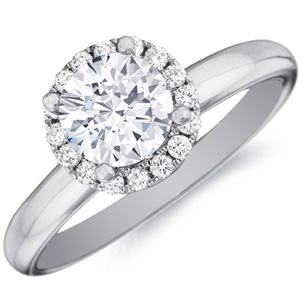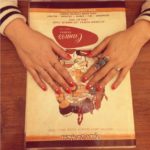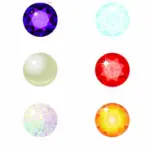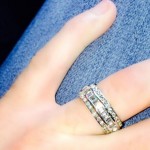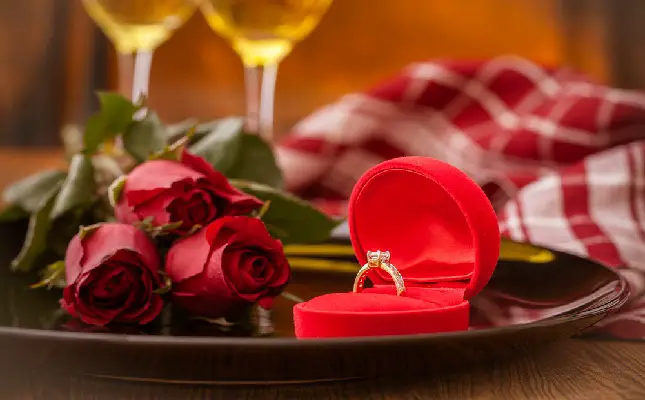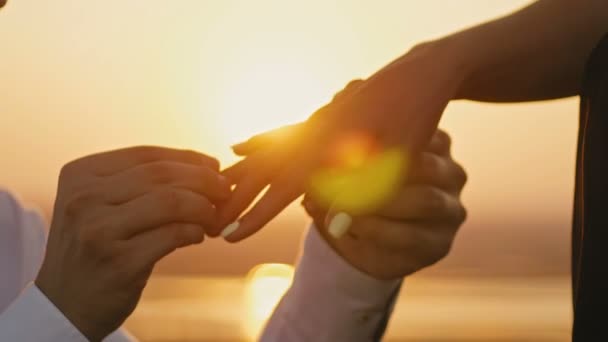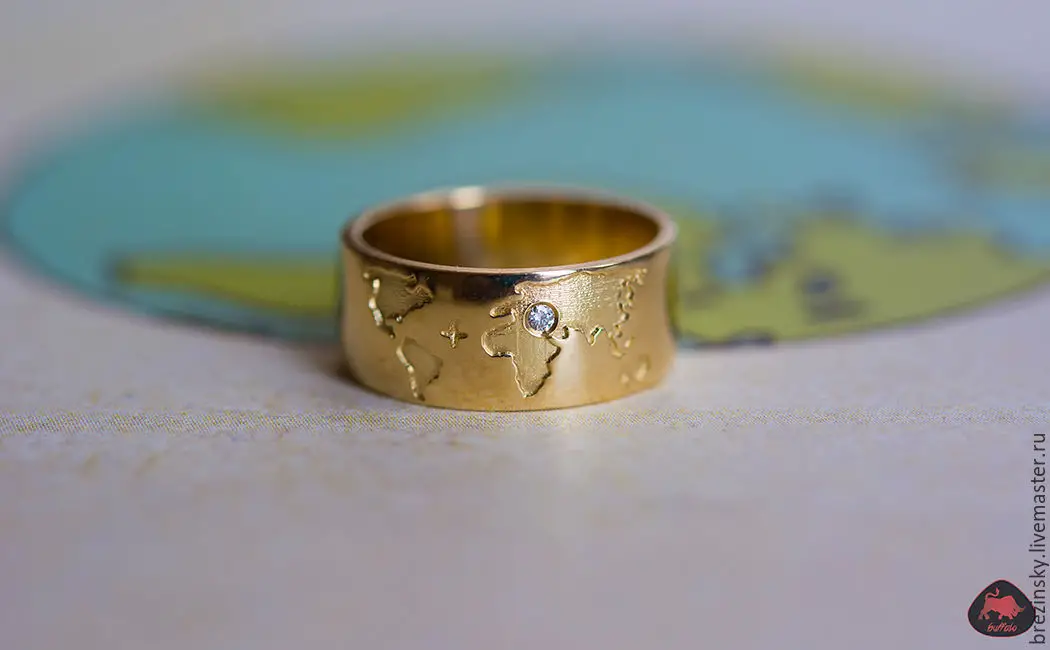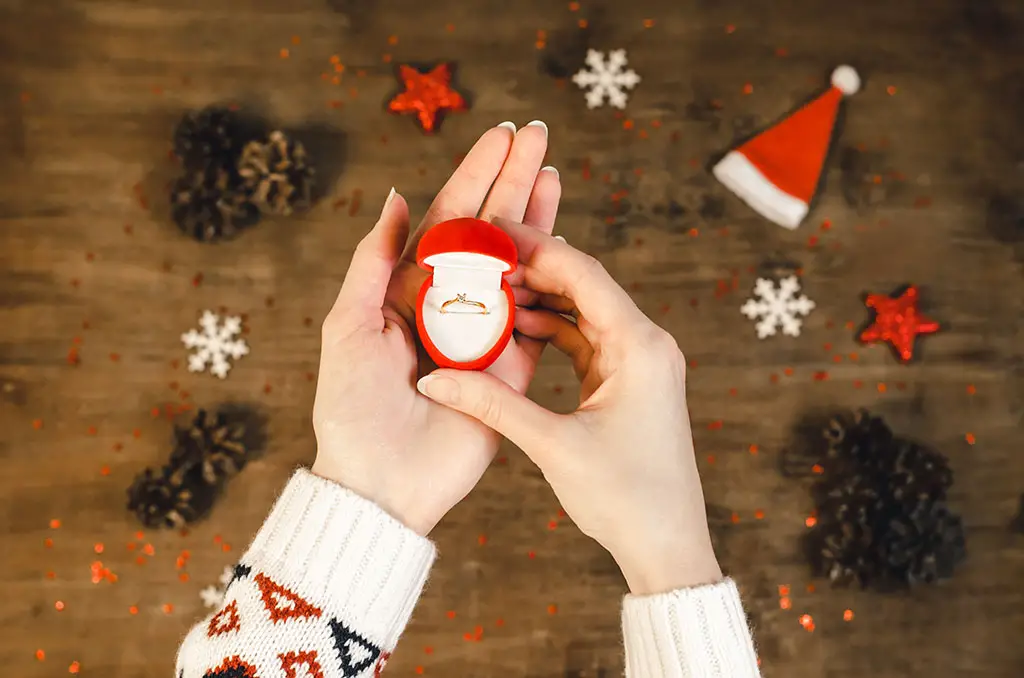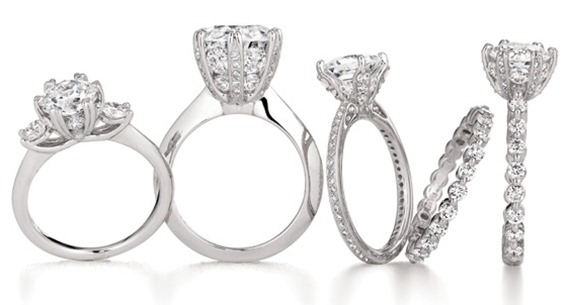 Before getting engaged, engagement rings seem like such simple things. A diamond, some shiny metal, a nice box, maybe a heartfelt message and that’s it. When you begin the process of buying an engagement ring however, you learn that it’s anything but simple! As well as the big decisions like which metal, stone, cut, and setting you want, there’s several other little things to think about: the metal finish, your budget, and even how many prongs you want to hold your stone in place are just three of many.
Before getting engaged, engagement rings seem like such simple things. A diamond, some shiny metal, a nice box, maybe a heartfelt message and that’s it. When you begin the process of buying an engagement ring however, you learn that it’s anything but simple! As well as the big decisions like which metal, stone, cut, and setting you want, there’s several other little things to think about: the metal finish, your budget, and even how many prongs you want to hold your stone in place are just three of many.
It may seem like it never ends, but don’t worry: we’re here to help! Here is our ultimate guide to engagement ring settings, and what you need to know about each one…
First, let’s get the ‘Big 5’ settings out of the way. These are the 5 most popular settings that you’ll find on most new engagement rings. Vintage pieces can be a different story and we’ll cover that shortly, but for now, here are the 5 most common settings you’ll encounter in today’s jewellery shops.
Prong
The original and the best for many brides, the prong setting is a timeless classic and is what most people think of when they hear ‘engagement ring’. Traditionally, six metal prongs extend from the base of the metal to hold your precious diamond in place. When the diamond is sitting inside the prongs, the tips are gently bent over the diamond’s girdle to make it secure. The prong setting is so popular because it lets the most amount of light into the diamond, providing the best balance of sparkle and security. One drawback, however, is that over time the prongs may wear down and break or bend out of shape. If you lose one or more prongs, then your stone is at risk of falling out and disappearing. They can also tend to snag on clothing.
Bar
A bar setting has long been a popular choice for engagement rings too. Often seen in vintage rings, it’s still a common setting today and can be found in various ultramodern styles. Basically, a bar setting holds a stone in place on two sides with two metal bars set perpendicular to the stone. Before you freak out, the stone doesn’t merely stay in place by being ‘squeezed’ by these bars – there’s also a tiny groove in the metal that the girdle slots into for some extra security. Bar settings are usually used in designs with three or more stones, and is a cousin of sorts to the channel setting (below). Although it may not seem like it, it’s perfectly secure, but as with any setting long-term wear and tear means that regular inspection and occasional maintenance is necessary.
Bezel
A bezel setting is perfect for contemporary rings with a chic, modern look. And there’s another big advantage too; it’s definitely the most secure setting you can choose. The catch? Well, it doesn’t let as much light into your diamond, so it won’t be quite as sparkly – but we’re talking marginal differences overall. Basically, a bezel setting surrounds the entire bottom half of your diamond with metal, and keeps it in place with a very small slant on top that covers the edge of the stone’s girdle. It’s a very neat and tidy setting that can withstand daily use, but the entire ‘face’ of the diamond is still exposed for that wow factor. Great for active brides, ladies who use their hands a lot (i.e hair stylists, artists, etc.), or those who just want a simple, modern look.
Channel
The channel setting is very similar to the bar setting, with one key difference: instead of two bars keeping the stone in place on two sides, the channel setting carves a, well, channel into the metal of the ring’s band for the stones to sit inside, supported on all four sides. Like the bar setting, a small groove traps the girdle of each stone so there’s no risk of stones popping out. The channel setting is always used for multiple stones (usually at least five or six), and is a very popular choice for wedding bands – although it’s often seen on engagement rings to add some extra sparkle to a central stone. Although perfectly secure, the channel setting only really works for small stones.
Pave
A pave setting has a similar look to a channel setting, but is technically very different. ‘Pave’ is a French word meaning ‘paved’, and that’s exactly what the setting entails – ‘paving’ the diamonds onto the metal band and securing them with a small amount of molten metal in between each stone. As you might expect, pave settings aren’t as secure as some others even if created by master jewellers. Over time, you should expect to lose a stone or two – especially if you opt for micropave. Nonetheless, pave diamonds are becoming increasingly popular on wedding bands and are regularly seen flanking the central stone of engagement rings. Since the stones are always small, it’s a fantastic way to add some extra pizazz to your ring without breaking the bank.
That gets the most common settings out of the way, but there are so many more out there to choose from. If you want something a little more unique or unusual to make your engagement ring one of a kind, check out these less common settings for size…
Tension
A tension setting is one of the more precarious ways to show off your diamond. It looks amazing, dazzling even, but don’t say we didn’t warn you. Tension settings are not suitable for everyday wear because unlike bar settings, the stone is literally held in place with ‘tensile force’, i.e. two pieces of metal pushing against it. Many jewellers won’t sell tension rings with real diamonds because the likelihood of the bride losing the stone at a later date causes too many headaches for them! That said, tension settings are some of the most beautiful, and make for a stunningly modern look. The diamond is entirely exposed for maximum light refraction, and appears as though it’s ‘floating’ between the two ends of the band.
Basket
A basket setting is a type of prong setting, but with a little difference. Four or six prongs rise up from the base of the metal band for the stone to sit in, but then more horizontal prongs are added to create a ‘basket’ shape, further reinforcing the overall setting and adding an extra element to the design too. A basket setting still lets in a generous amount of light, but makes the prongs that little bit stronger, so they last longer. If you’re the clumsy type and tend to knock your rings off door handles or snag them on clothing, but you still love the classic look of a prong setting, then this could be the perfect choice for you.
Trellis
Another variant of the typical prong setting is the trellis. This is a truly elegant design that adds some extra sophistication to your engagement ring, and further accentuates your beautiful central stone. The trellis setting features interwoven prongs – so the prongs that secure the diamond on its left side actually begin on the right hand side and curve under the bottom of the stone, adding some open spaces to the design. There’s another advantage too: by blurring the outline of the stone as it sits in its prongs, the trellis setting makes your diamond look much larger than it actually is. Trellis settings are also not uncommon on antique rings, if that’s the route you’re taking.
Decorative
A decorative setting is a rather general term that means pretty much exactly what you think it does. It’s a term often used by jewellers to describe a ring that has detailing such as filigree, millegrain, hand engraving or a certain finish applied to the setting. It’s a very common occurrence in vintage engagement rings, and makes for a unique conversation starter – even if the stone attached is less than dazzling. All decorative settings are very delicate however, so careful maintenance is needed. They’re also prone to collecting dirt and grime, and if you’ve adorned your finger with a vintage piece it may not be suitable for constant wear. That said, it’s not all that rare to find engagement rings that are ‘made new to look old’, such is the soaring popularity of the vintage trend these days. In that case, you may have more leeway than usual.
And finally, some more settings that aren’t really ‘settings’ per se, but more additions to many of the above types of settings to make your engagement ring really stand out from the crowd.
Bridge Accent
A bridge accent adds something special to the bridge of the ring – the part where the metal and the setting meet. Usually it’s a small stone or some delicate metalwork, and it can only be seen from a ‘through finger’ perspective. If you love attention to detail and all-over beauty, this is definitely something you should consider. Again, it’s a common feature of antique rings but has been making a comeback in modern styles lately too.
Halo
A halo ‘setting’ simply means surrounding your central stone with a ring of smaller stones. It creates the illusion of a larger stone and adds plenty of extra sparkle. With the increase in demand for engagement rings with coloured stones, diamond halo settings have become more and more popular to accentuate them, but they’re just as often seen the other way around (a halo of coloured stones surrounding a diamond) or as all-diamond combinations.
Peg Head
This isn’t strictly speaking a type of setting, but it’s a term jewellers use a lot and it pays to know what it means. A peg head setting means that the setting itself has been soldered onto the metal band rather than the whole thing being cast as one solid piece. If done properly, there is absolutely nothing to worry about. If done poorly however, there’s a chance you could encounter problems and need to have your setting replaced some years down the line (again, don’t worry – that’s a rare occurrence in general and will most definitely not happen if you buy from a reputable jeweller).
